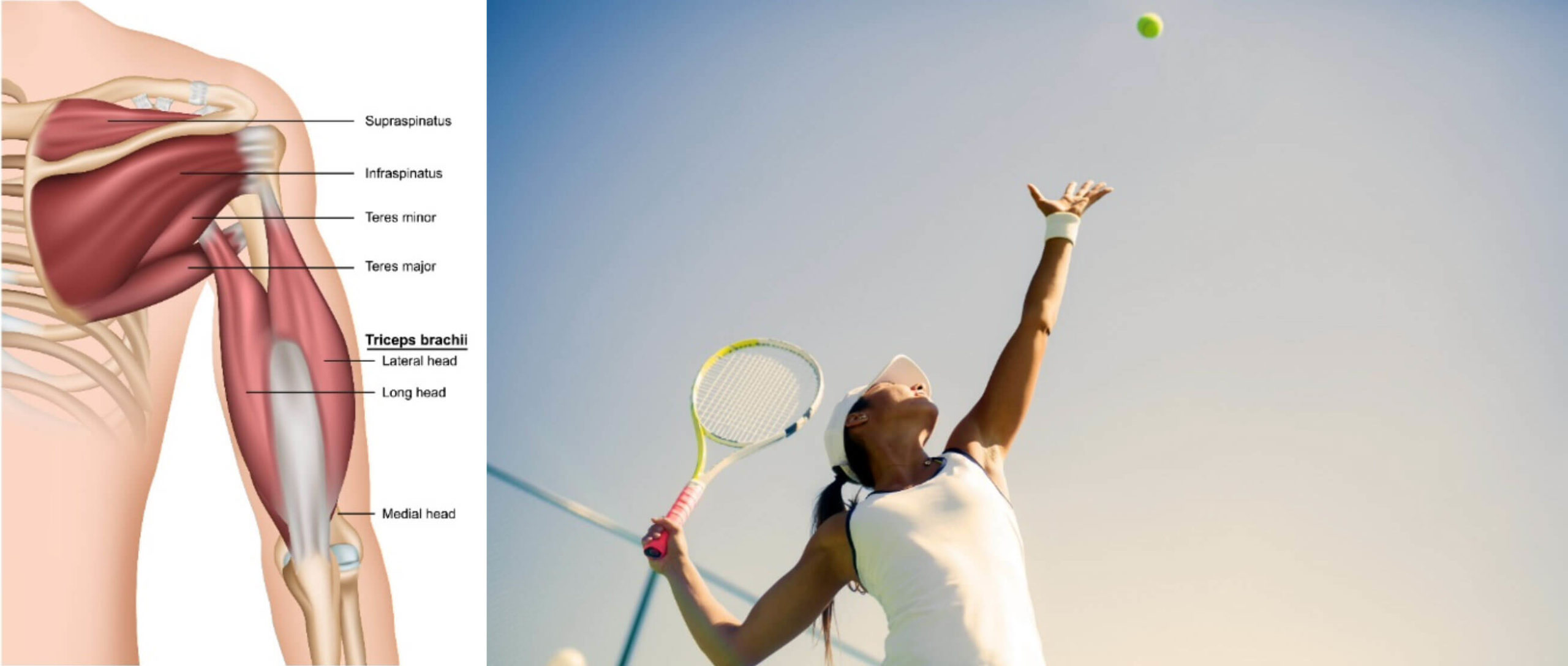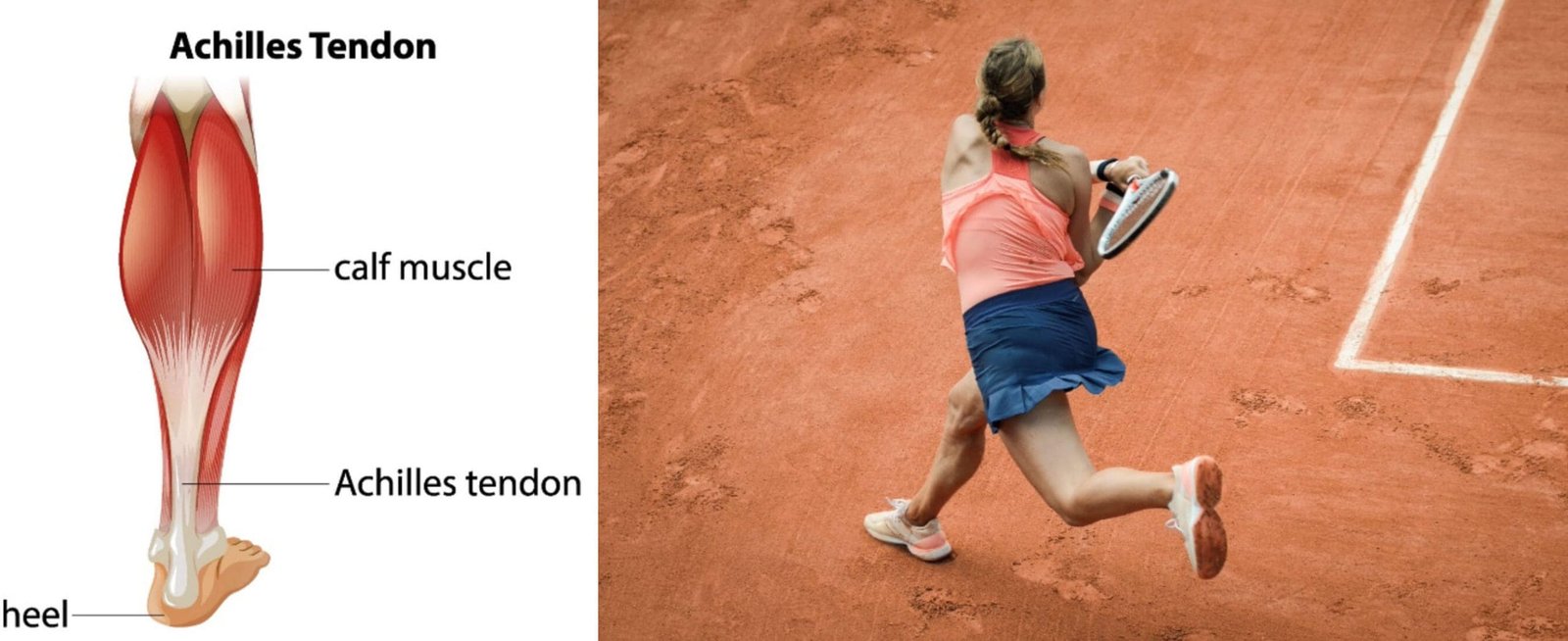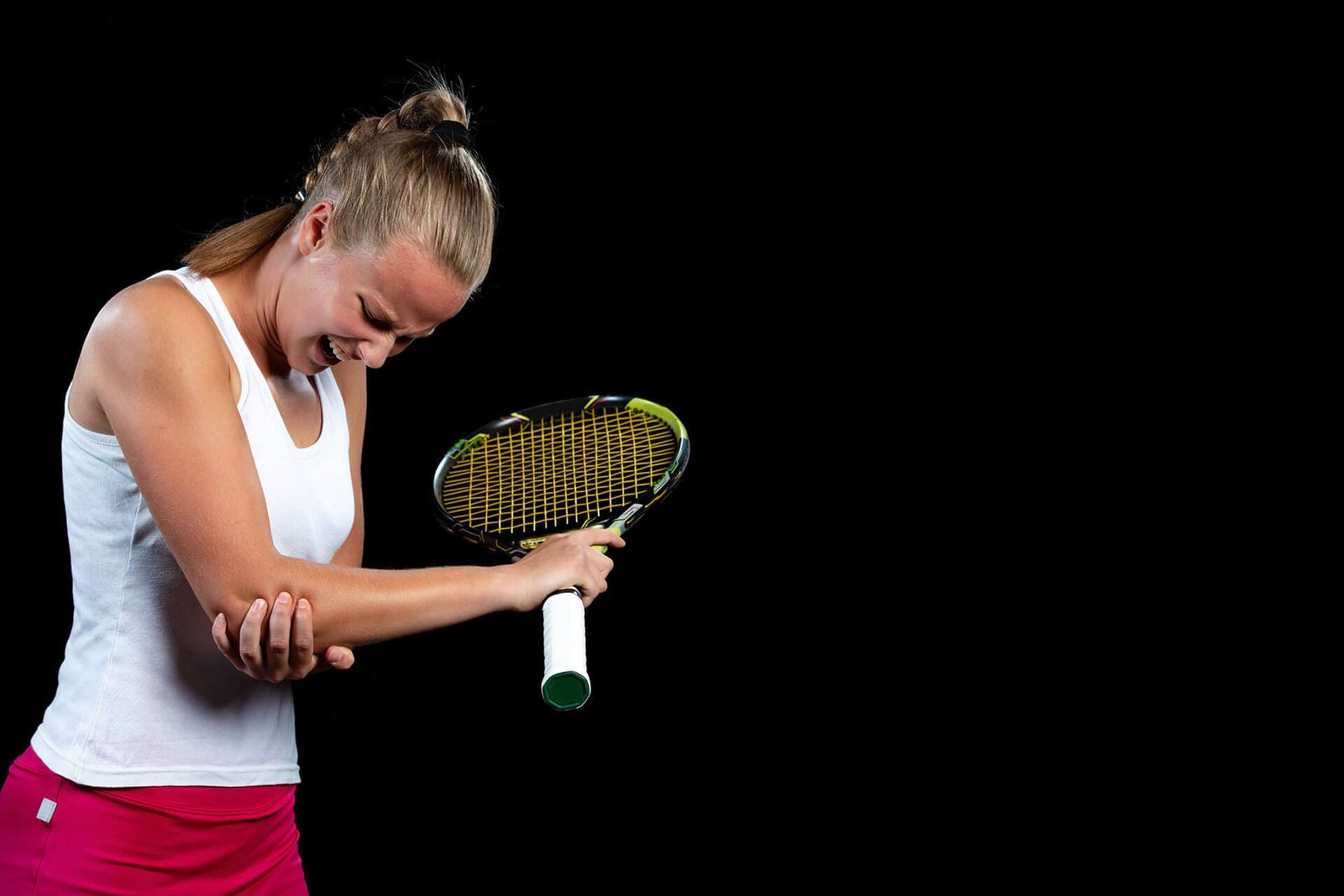Watching the world’s most talented tennis players compete at Wimbledon inspires many to pick up a racquet and get playing. Combining the excitement of playing tennis, with the longer nights and warmer weather of summer, results in a sharp rise in people attending physiotherapy clinics with tennis related injuries.
What are some common Tennis Injuries?
Here’s our tennis injury list for the most common tennis related injuries we see in our clinics.
At this time of year (wimbledon), we see many patients suffering from a multitude of injuries directly related to playing tennis. All of these injuries have one thing in common, they involve a tendon
What is Tennis elbow?
Tennis elbow refers to an irritation of the tendons of the outer elbow. These tendons anchor the wrist extensor muscles and are responsible for cocking the wrist up, for example, when lifting your wrist up to ‘rev’ a motorbike or for gripping objects such as a tennis racquet. Repetitive gripping of a tennis racquet and in particular the motion of a backhand swing/volley during tennis can overload this tendon, causing pain.
What is Shoulder Impingement Syndrome?
Shoulder impingement syndrome refers to pain emanating from the tendons of the rotator cuff (small muscles of the shoulder which guide and steer arm movements) or from the bursa that sits above these tendons (a bursa is a fluid filled sack which provides a friction reducing surface for movement to occur). This is often descibed by patients as a “tennis injury in the upper arm”. Shoulder impingement can be due to many reasons; however, the over-head action of a tennis serve places these tendons under considerable strain and is a common cause of shoulder pain in tennis players.

What is Tennis Leg?
Tennis leg refers to a tear of the inner portion of the calf muscle (Medial gastrocnemius). This injury involves the junction between the medial gastrocnemius part of its tendon that runs within the muscle belly itself (called the aponeurosis). Tennis leg often occurs when sprinting to return the ball and causes a sudden sharp pain in the back of the lower leg.
What is Achilles Tendonothapy?
Achilles Tendinopathy refers to pain originating from the Achilles tendon at the back of the ankle. The Achilles tendon is a strong powerful tendon pushing you forwards during walking and running. It can be placed under considerable pressure when playing a dynamic sport such as tennis, especially if this is a new hobby.

Why are tennis injuries so common?
Tendons do not react well to sudden changes in activity levels. When a tendon is subjected to repeated periods of unexpected activity (for instance, taking up tennis after watching Wimbledon!) injury is inevitable.
The unprepared tendon is unable to cope with the new elevated demand placed upon it and, as the load continues to increase, the pressure on the tendon structure also builds.
A stressed tendon responds to this by producing an inflammatory reaction. Inflammation of the tendon is called tendinitis. Repeated periods of inflammation without adequate recovery effects the tendon’s ability to heal. Sub-optimal tendon healing results in a thickened and weakened tendon. A thickened and weakened tendon is known as a tendinopathy.
How are tendon injuries diagnosed?
Tendon injuries can be diagnosed by a physiotherapist using a combination of clinical testing (testing your movements and strength) and using diagnostic ultrasound.
Diagnostic ultrasound has been proven to be the gold standard diagnostic tool for diagnosing tendon injury and has been recommended over MRI for assessing shoulder, elbow, and Achilles’ tendon conditions.
At Complete all our clinical specialists are fully qualified advanced practitioner physiotherapists and musculoskeletal sonographers. This unique blend of experience ensures you get the most accurate diagnosis possible. When the correct diagnosis is made the most effective treatment course can be prescribed.
How are tennis related tendon injuries treated?
Tendon injuries are a very common cause of musculoskeletal pain, especially in the sporting population. A tendon and its corresponding muscle need to be able to withstand the demands placed upon it to remain pain free, strong and healthy.
Rehabilitation for a tendon requires modification of activity and specific exercises. Rehabilitation can be undertaken with a course of physiotherapist, and in most cases is successful. However, in some cases rehabilitation alone isn’t enough to manage the symptoms, especially in cases where there is an associated bursitis. In these cases, an ultrasound-guided steroid injection may be considered to allow pain free rehabilitation to proceed.
Steroid injections for a tendon injury?
The good news is, bursitis responds very well to corticosteroid injection therapy.By reducing the pain and inflammation associated with bursitis, you will be more able to tolerate rehabilitation thereby, addressing the underlying tendon condition.
At Complete, we take tendon rehabilitation very seriously. We take great care to fully assess every injury that we see. If your clinician believes you have an associated bursitis you may be offered an ultrasound guided steroid injection.
The current research base suggests that injecting a corticosteroid (powerful anti-inflammatory medication) into a tendon may cause harmful effects on its structure. In many cases of tendinopathy, the surrounding soft tissues such as the bursae (fluid filled cushions that support the tendon, allowing friction free movement) become swollen and inflamed. An inflamed bursa is known as bursitis. Bursae are incredibly pain sensitive structures and can be responsible for a large proportion of pain associated with tendon injury.
In cases of tennis leg, a steroid injection is not indicated however, the swelling associated with this condition can be aspirated (withdrawn). This aspiration can help relieve symptoms and push on with your rehabilitation.
If an injection is offered, it is vitally important that you undertake a course of physiotherapy within two weeks to address the underlying causes of your condition.
All injections at Complete are undertaken under ultrasound guidance. This ensures the accurate placement of the needle, to avoid accidental infiltration within the tendon itself.
Your clinical expert will be able to accurately diagnose your condition, prescribe the most effective medication for you and undertake an ultrasound guided procedure in one appointment, without the need for a G.P referral or long waiting times.
If you would like to know more or would like to book an appointment. Please contact us on 0207 4823875 or email injections@complete-physio.co.uk.
With Wimbledon 2021 just around the corner, interest in playing tennis naturally increases.
Luke Millward, clinical specialist physiotherapist at Complete, serves up a discussion on the impact of tennis on the body and what you can do if you have a tennis related injury.


